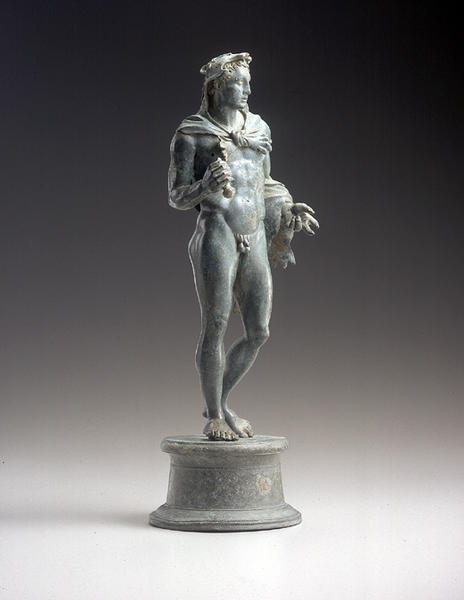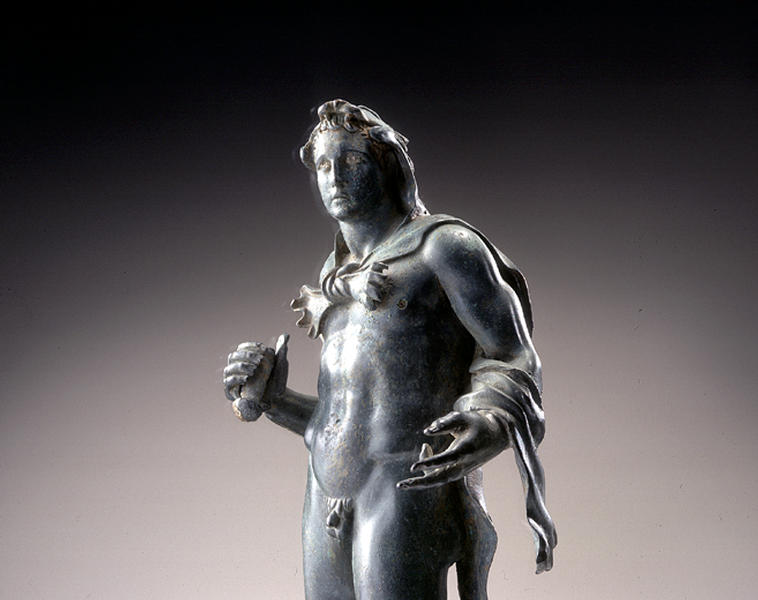Herakles
- 4th - 3rd century B.C.
- Bronze, glass
- H-20
Catalogue Entry
4th‐3rd century B.C.
Bronze, glass
H. 20.0 cm
This small statue shows Hercules with a lion-head skin draped from his head and the forepaws of the lion tied across his chest. The end of this lion skin drapes across his left arm and his right hand holds a club. These are typical attributes for Hercules, but here the gently detailed depiction of the fur, the balanced musculature without excess, the glass eyes, and the minutely expressed hair and finger tips all give a verisimilitude to this small figure. The detailed quality and its superb formal expression give this 20 cm tall figure the appeal of a much larger image. This figure has "the extreme delicacy of execution even in the smallest details" described by Pliny, which can be found in the works of Lysippus, sculptor to Alexander the Great. Hercules was born the son of Zeus and the queen of Tiryns, and was the greatest hero in Greek mythology. The jealousy of Zeus's wife Hera prevented him from becoming a great king and after overcoming a number of tests, he then vanquished the race of giants and saved the gods. This small figure shows Hercules as a young man, but it could also be seen as an image of the young king Alexander dressed in the guise of the most popular hero.

